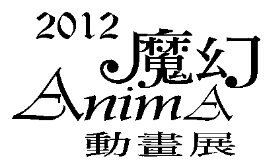文/石昌杰
電腦發明之後,動畫藝術家們彷彿發現了新大陸,開啟了新世界/新視界的探索。早期的電腦藝術拓荒者,自覺於技術的受限,不論是西方的John & James Whitney,或者東方的河口洋一郎,皆以抽象的美學思維為動態影像表現的核心。有趣的現象是,當表現工具,電腦動畫技術,益加完善與擬真之際,動畫創作者對於創作思想上的美學自覺,反而越趨淡薄,一不小心就落入了產業制式的模板。相當耐人尋味的是,當電腦技術來到了可以「超級擬真」與「照像寫實」的當代,電腦動畫還能有什麼樣的創意與表現?
本單元以《第二自然》統稱的動畫短片,試圖呈現的就是,近年來動畫創作者超越出「再現自然」與「仿自然」之外,各自迥異的美學立場與創作思維!
其中,同樣以科學知識為製作藍本的《細胞的內在生命》(The Inner Life of the Cell)與《20 赫茲》(20 Hz),前者以模擬細胞內的構成元素為介紹對象,後者以太陽風暴與地磁暴等科學數據為本,雙雙創作出生活中不可視的動態影像,讓觀眾的視野與想像力,有一種擴增的驚奇效果!製作團隊的創作態度也彷彿由「再現自然」轉化為「再造自然」!
此外,另外一部以自然界蜘蛛織網、獵殺昆蟲的劇碼為本的《編織危機》(Loom),乍看之下會以為只是一部擬真的動畫;然而,其中敘事的手法與影像的表現,卻穿插著破壞性的抽象畫面,讓觀眾的視覺經驗來回在「自然事件」與「藝術處理手法」之間,一方面打破了「再現自然」的制式表現,另一方面,也更突顯了創作者的影像美學態度。
自稱新時代(New Age)動畫創作團隊AUJIK所製作的《森林中的森林》(A Forest within a Forest),在創作上不僅崇敬自然,向自然取經,更具備了強烈的主張,試圖透過電腦動畫宣示科藝技術正如同自然界的花草樹木一般神聖!
其他三部作品《外部世界》(The External World)、《病院樂園》(The Wonder Hospital)與《商標的世界》(Logorama) ,則不約而同針對人造自然與社會提出嘲諷、揶揄與黑色幽默的關照。《外部世界》在電腦動畫技術尖端的時代,反其道而行,刻意營造一個低解析度的動畫世界觀與角色;有趣的是,其中角色的荒繆行為,反應的卻是人類社會脫序崩塌的現象。《病院樂園》則以詭異懸疑的故事情節,直指當代人追尋自我真實面貌未果,反而深陷外在整型的畸形發展。《商標的世界》只是簡單地套用了一個類型片警匪槍戰的公式,卻高明地將當代資本社會的企業商標,設計成片中各種角色,並建構其動畫世界觀;巧妙地將資本主義金權競爭下的品牌意識,譏諷為類型片中驚險又可笑的場面,十足的黑色幽默!
整體而言,以上動畫短片,不僅反應了動畫創作者對於電腦技藝的創作自覺,經常性地強調其「數位圖像」的獨特美感;有時候,甚至更進一步在內容上反思起,人造自然的烏托邦本質與荒繆性!
After computer was invented, animation artists found a new continent, and started their exploration on this new world and sights. The pioneers of the filmmaking were bound by the limitations of the technology. Whether John and James Whitney from the West or Kawaguchi Yoichiro from the East decided to use abstract expressions to be the chosen style of the animation images. The interesting thing is that when the tools of expression - computer animation technology - are towards to perfection and as real as it can be, the aesthetics self-awareness of the animator on their creative thinking was thinning. It is a trap that leads to form repeatable patterns created by the industrial mechanism. What keeps us wondering is that when the computer technology is capable of ultra stimulation and photorealism, what is there to do on creativity and expression in computer animation?
This section is a series of short animation films with a shared title “Artificial Nature.” The films try to present the alternative creative perspectives other than “recreating nature” and “imitating nature” made in the past few years, and to provide other choices in aesthetics.
From the series, “The Inner Life of the Cell” and “20 Hz” were based on real science ideas. The former introduced the components of a cell simulation, and the later one used statistics of solar storms and magnetic storms. They both created moving images that were invisible in our daily life. The films triggered the wow effect of the audience’s mind and imagination. The perspective of the creating team also changed from “representing the nature” to “recreating the nature.”
A film based on the spiders, “Loom,” interprets the story of spiders weaving webs to capture insects. At the first look, one might think that it is a simulation animation; however, the narrative and the image presentation had some destructive abstract scenes to interrupt them. The viewing experience was back and forth between “natural incident” and “artistic stylization.” On one hand, it breaks the “representation of the nature;” and on the other hand, it brings out the image aesthetic perspectives of the creator.
An animation group AUJIK called themselves “New Age.” Its film “A Forest within a Forest” was not only an attribute to the nature, but it learned from the nature. The statement was enforced by using computer-generated animation to proclaim that the technology art is as respectable as the flours and trees in the nature!Three other works are “The External World,” “The Wonder Hospital,” and “Logorama.” They all happened to focus on the satire, sarcasm and dark humor on the artificial nature and society.
“The External World” countered the state of art computer animation technology today, and created a low-resolution animation world and characters on purpose. What was interesting was that the absurd behavior of the characters reflected the crumbling of the society in the human world. The narrative of “The Wonder Hospital” was haunting and suspense. It revealed the unsuccessful search of what self is, and found the self trapped in the distorted world of plastic surgery. “Logorama” adapted a simple formula easily found in cops movie genre to cast different company brands as characters in the story. The brands constructed an animation based on their worldview. The film cleverly mocked the idea of branding, which weighed heavily in the capitalism world. The brands act out all kinds of thrilling and funny action scenes. It is the dark humor to its fullest.
Overall, the animation shorts in the series not only represent the self-awareness of creativity in the technology seen among the animation artists who often emphasize the unique aesthetics of “digital images;” other times, they further evoke the absurdity and the utopian ideology of artificial nature in their contents and stories.


